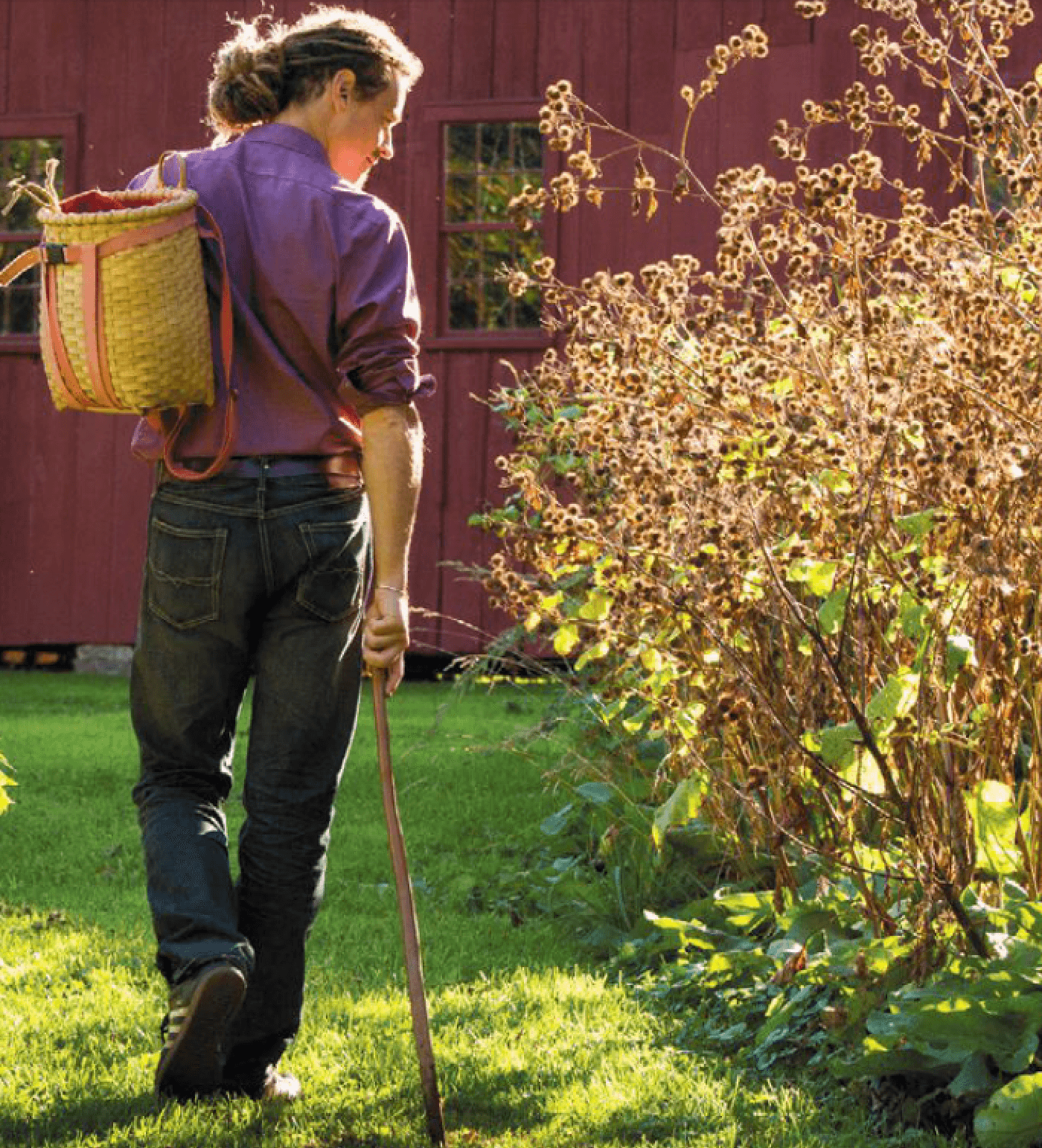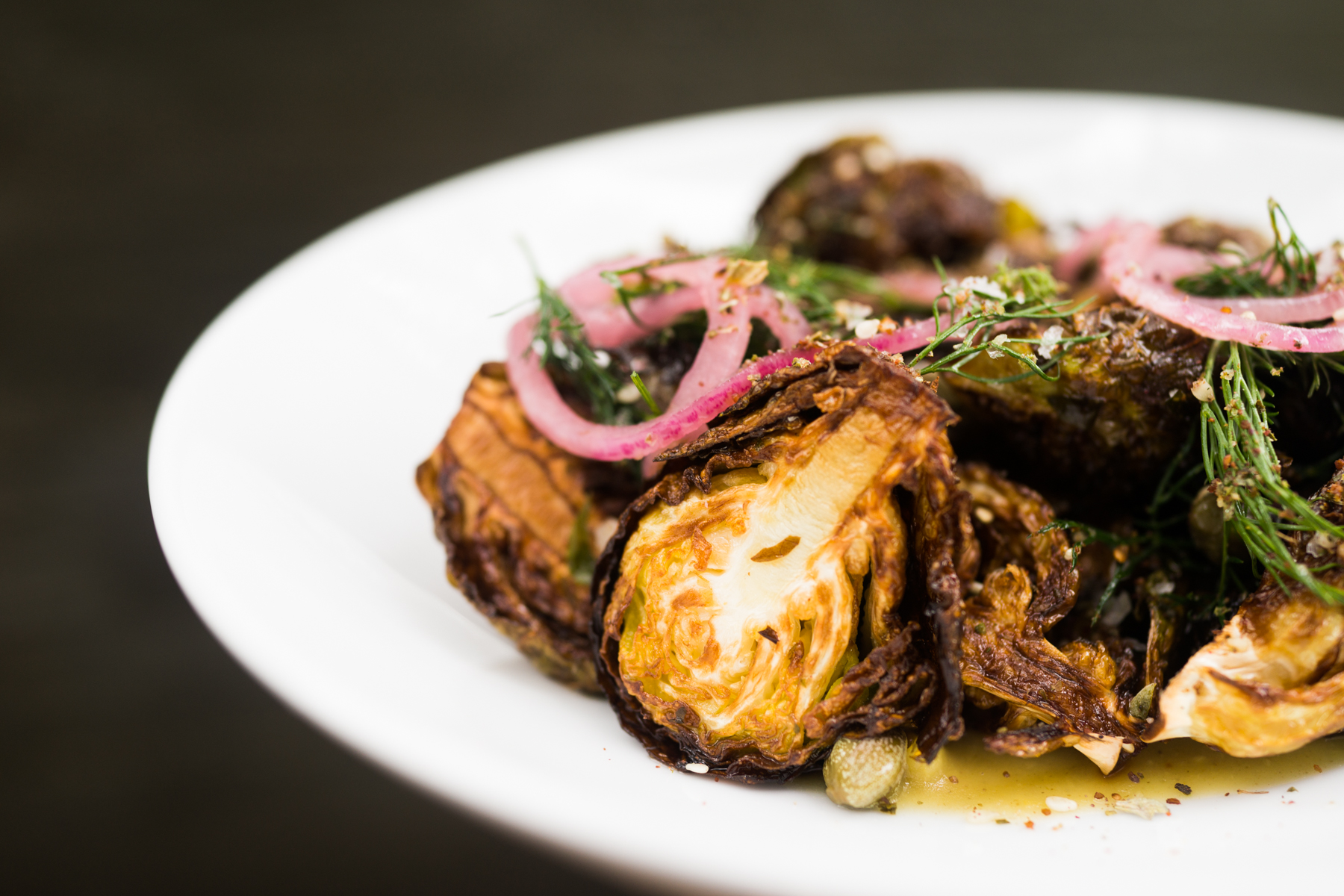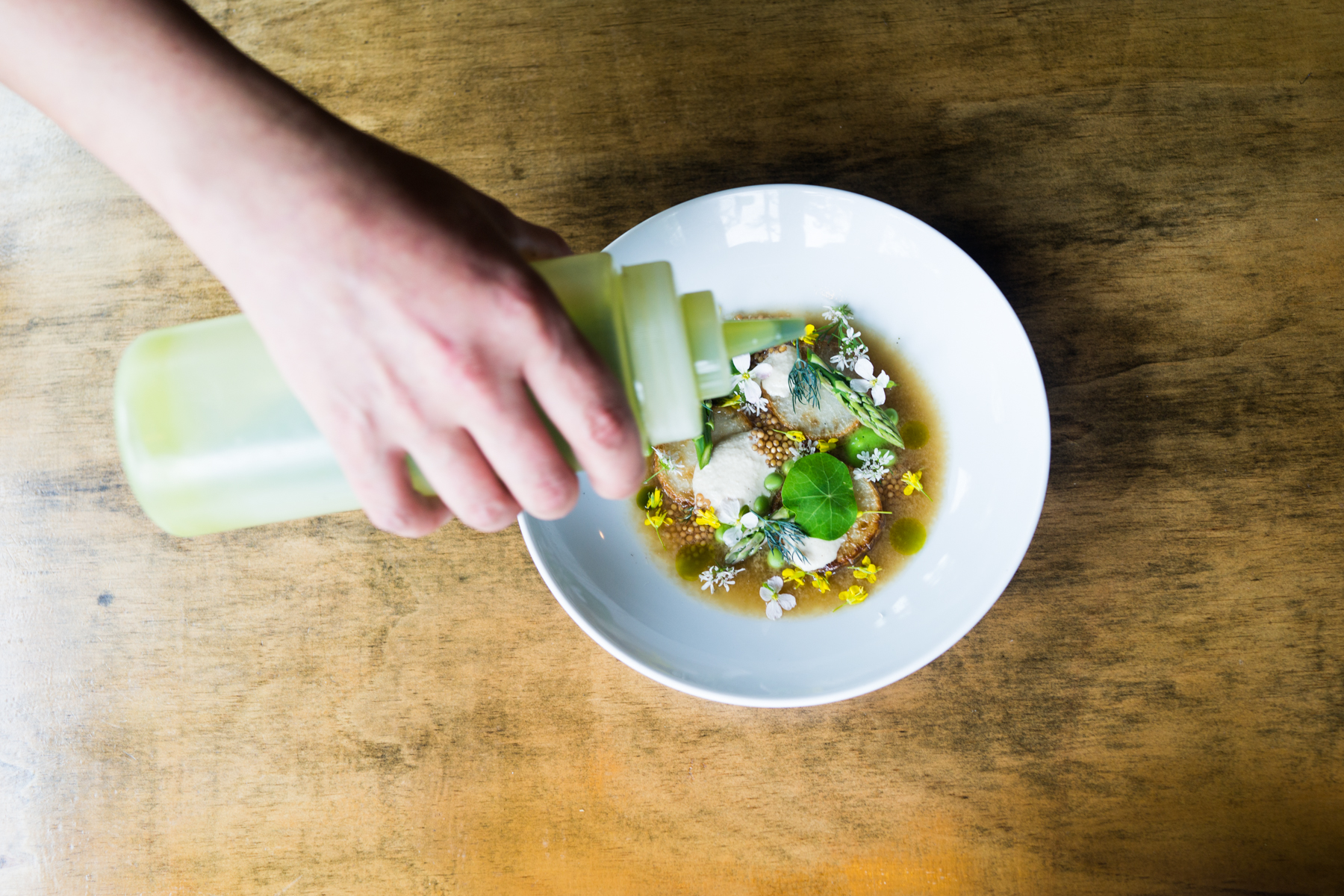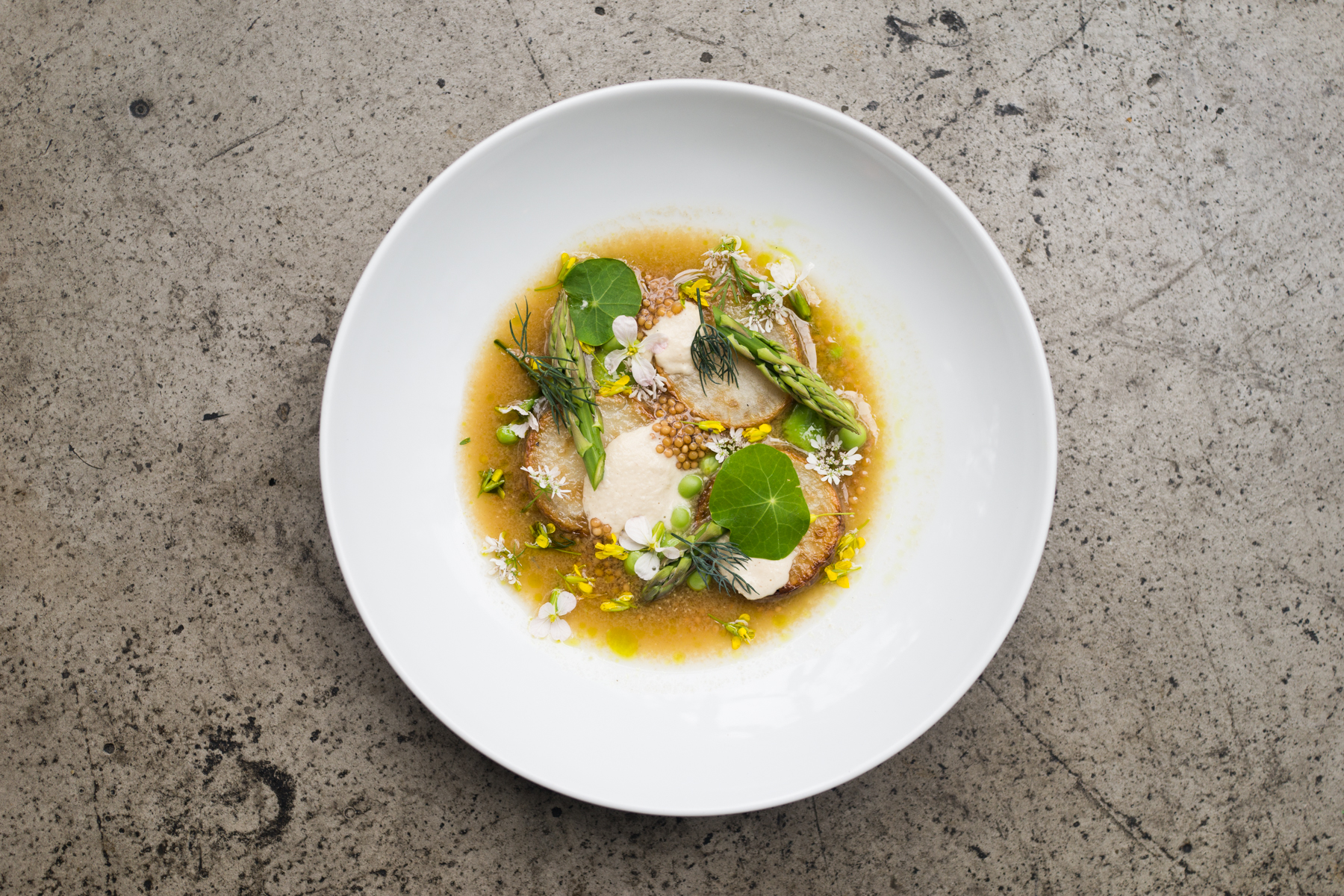By: Molly Helfend
It is an honor to have a botanical genius like Guido Masé offer his wisdom and expertise to House of Citrine. Chief clinical herbalist at Urban Moonshine and Burlington Herb Clinic, educator at the Vermont Center for Integrative Herbalism, author of the renowned herbal bible The Wild Medicine Solution and DIY Bitters: Reviving the Forgotten Flavor, he is a personal inspiration to us. He specializes in holistic Western herbalism, with his approach being eclectic and drawing upon many influences. He spent his childhood in Italy, in the central Alps and in a Renaissance town called Ferrara. After traveling the United States, he settled into central Vermont where he has been living since 1996. Guido shared some pieces of his daily flow, as well as some tips and weighing in on the importance of adding plants to our lives. You can follow some of Guido’s impassioned work here.
What are your favorite herbs?
Yarrow, dandelion, and the Artemisias. I like Yarrow because of the mythology connecting this plant to divination, spirit journeys, and protection. Plus, it’s a comprehensive medicine chest all by itself: for wounds, as a bitter, as an aromatic for digestion and the heart. Dandelion to me is iconic: it is a safe, gentle, effective tonic herb that most people recognize, which makes it a good introduction to herbal medicine. I’m also drawn to its irrepressible spirit. And the Artemisias – from mugwort, to sagebrush, wormwood and the antimalarial Sweet Annie, these plants have purifying, bitter, magical, lunar qualities and the legends surrounding them are almost endless. And absinthe.
What and who are you most inspired by? Where do you draw inspiration from?
While time alone outside, especially in the mountains, has always been a source of renewal and inspiration, I am finding more and more that reading and discussing new, groundbreaking ideas with friends and colleagues gets me excited to write and create more. This often happens during travel, when the stage of our lives is renewed. Though I am an herbalist, I find myself drawn to those who study pattern in physics and biology: from Fritjof Capra and more recently Jeremy England of MIT, to the classic work of Lynn Margulis and more contemporary folks like Mark Changizi and Rob Dunn. Students of consciousness, particularly non-local consciousness like Alva Nöe, really make me think. Poetry is a treat: a chance to be inspired more by the heart than by the head, and I appreciate all types. And finally, I am inspired by and greatly respect herbalists who are also research scientists, publishing groundbreaking work: folks like Kevin Spelman and Pam Weathers.
What is your mission with your herbal knowledge?
I believe that herbal medicine is an ancient discipline that holds deep insight into how humans can walk on this earth with grace, power, and resiliency. It teaches interconnection and reminds us that the inner and outer worlds are intimately entangled. So my mission is to increase botanical biodiversity in modern culture: if we can do this, the next chapter in our human story will be more wild, green, strong, and creative. If, as a species, we can move forward with technological progress while also holding and valuing our green roots, we can make it so.
What is your daily routine consist of? Morning? Afternoon? Night?
Morning: My morning routine is very important to me – it sets the tone for the whole day, and I don’t feel right without it. I’m an early riser – usually between 4:30 and 5:30. I set water to boil, and while waiting will do a series of core strength exercises for about 10 minutes. I brew coffee in a French press when the water is ready, and also some tea to bring to work later. At this point I will take liquid herbal extracts or powders for the morning – usually just some hawthorn berry extract and a blend of Astragalus and medicinal mushrooms, but depending on what’s going on there could be others, too. Then I drink 2 cups of coffee (with whole milk, or coconut oil, or butter depending how I feel) while reading research abstracts for medicinal plants and flagging any interesting ones for later. Then, a 4-10 mile run depending on when my wife needs to leave for work that day. By the time I return, I wake up my daughter and we get ready for school. Weekends are pretty much the same, though maybe I sleep in a little more and run a little farther.
Afternoon: I like taking some bitters before lunch – it often makes a difference for me with energy levels later in the day. Other than that, my afternoon routine often includes reading and organizing my thoughts for any writing projects on the agenda. Twice a week, I get to leave work early and pick up my daughter from school at the end of her day. When the weather is nice, we’ll spend a few hours wandering around outside and collecting interesting things.
Night: If I feel inspired after dinner and cleanup, I will spend a few hours writing or playing music – but that’s not every night. Often I will turn in before 10pm. Before bed I spend ten minutes stretching: some twists and forward bends mostly, a simple routine I started almost 30 years ago to maintain flexibility. It makes a difference in my running – but I’m not as flexible as I was back then…
How would you describe your approach towards herbalism and working with edible and medicinal plants? Do you feel more inspired by traditional knowledge or western herbalism approaches? Do you incorporate Chinese, Ayurvedic, Native American, South American or really any other traditional approaches?
My approach is what you would call “western” – I was raised in a European tradition and rely on concepts of heat and moisture. I am also very drawn to the biochemical and physiological understanding of the human system and its surrounding ecologies, and the study of herbs from this perspective is endlessly fascinating. I will incorporate a lot of different medicinal plants from all around the world in the work I do, but if they aren’t part of the core European set, I try to place attribution (the cultural roots) especially if teaching about them. Beyond this, my relationship to plants and nature embodies an animist approach: at all levels, biological systems have a spirit that can be approached using dreams, intuition, and archetypal language (myth, tarot, magic).
How do you include the Tao of yin/yang within your practice?
Mostly, in two ways: first, in human physiology, almost all processes have both a yin and yang and balancing these is an important consideration in therapeutics (for example, the sympathetic and parasympathetic; aldosterone and atrial natriuretic peptide; estrogen receptor alpha and beta, to name a few). Second, and you see this all the time (notably, exhausted children), it is useful to remember that excess yang or deficient yin can transmute into its opposite. I’ve found this to be a valuable diagnostic consideration. But really, I know very little about this aside from a deep, but hard-to-describe, poetic feel for it.
What can we do to incorporate herbs into our daily lives? Which ones and why?
Well, the why is simple: in living systems, resilience is proportional to diversity, and therefore, increasing botanical diversity in our lives should be a goal if we want to be more resilient, creative, and inspired. There are so many ways to incorporate herbs: from key, specific plants used to manage disease, to the tonic herbal approach. The latter is my favorite, and my suggestion is that you try to use a bitter plant, an aromatic plant, a sour tonic and a sweet tonic every day. Bitters often do well as alcohol extracts. Aromatics make amazing teas, baths, and incenses. Sour tonics (such as berries) are food, but also smoothie material. Similarly the sweet tonics like Astragalus or Codonopsis can be incorporated into soup stock, bone broth, or sauces of all types. They also can be powdered and added to grains or smoothies.
Do you have any advice on sustainable practices we can follow?
We need to pay attention to how herbs are being harvested and passed through the supply chain before they reach our kitchens. Not only are native plant populations at risk in many cases, but growers and harvesters are often treated very poorly, paid substandard wages, and frankly exploited for their knowledge by brokers and commodity traders. This is of course a generalization, but as ecologically-minded herbalists, we have to pay attention to these issues. I encourage you to look at the work of United Plant Savers and the Sustainable Herbs Project, as well as the FairWild standard developed by Pukka herbs.
Herb you truly believe in that isn't as well known?
Horse chestnut. In Europe, it’s the go-to athlete’s herb, used topically for sprains, strains, tendonitis, and more. Safe in pregnancy, it has an abundance of clinical research showing its effectiveness for varicose veins both topically and internally. And it has a noticeable anti-inflammatory effect too – for aches and pains and arthritis. And the dose is really low – 200-300mg of powdered seed twice a day, making it a really cost-effective, powerful remedy.
Absolute staples you cannot travel without?
Depends where I’m going. I bring Artemisia annua to east Africa. Other than that, I bring bitters, and one or two tonics with me: either a blend of Astragalus and medicinal mushrooms, or a “special” tonic (like Oplopanax if I’m going to the Pacific northwest), that I can take a few drops of here and there for inspiration and grounding. Finally, I bring a pared-down first-aid kit with me when I travel, and powdered Yarrow is always in there. But remember – there are plants everywhere! It’s often better to try the ones that grow where you’re visiting. I don’t bring a medicine kit with me, just 1-2 bottles of tincture.
Do you believe in certain diets or follow any dietary patterns? Paleo, vegan, vegetarian etc.?
I am an opportunivore. I believe that, given the right baseline of good air, water, movement, love, and herbs, humans can tolerate an incredible variety of foods and live beautiful, well, vibrant lives.
How do you meld folklore herbalism and medical science in your career?
I find it’s useful to know “truth” from a range of different perspectives. It gives you a few different paths to explain what’s going on, depending on context and who’s listening. But if I’m speaking to a group, I always try to start with a story, get into personal experience, and then explore pharmacology before tying it back to the introductory story. You can see one as an allegory for the other, and it’s remarkable how often this is the case: serpents and DNA, yin/yang and hormone balance, trees of immortality and hawthorn’s research evidence in congestive heart failure. Herbalists learn the pharmacology better this way. And physicians get that this medicine is old, deep stuff for humans – encoded in our myths as much as in our gene regulation mechanisms.
If you could have 2 herbs everyday which ones would you choose?
Personally, hawthorn and reishi.
If you can instill one thing in peoples lives, what would be the take away?
Increase your biodiversity quotient: put that wild plant in your mouth!
Molly Helfend is part of the HOC team and is an herbalist and environmental activist. She graduated from University of Vermont in 2016 with a Bachelor of Science in Environmental Studies and a concentration in Holistic Health. She will be attending University of Kent in Canterbury, England to receive her Masters Degree in Ethnobotany in 2017. She has worked for Urban Moonshine, Greenpeace and received her training with Spoonful Herbals. Her goal is to receive her PHD and become a professor at University of California Santa Cruz. Molly resides in Monte Nido, California.






































